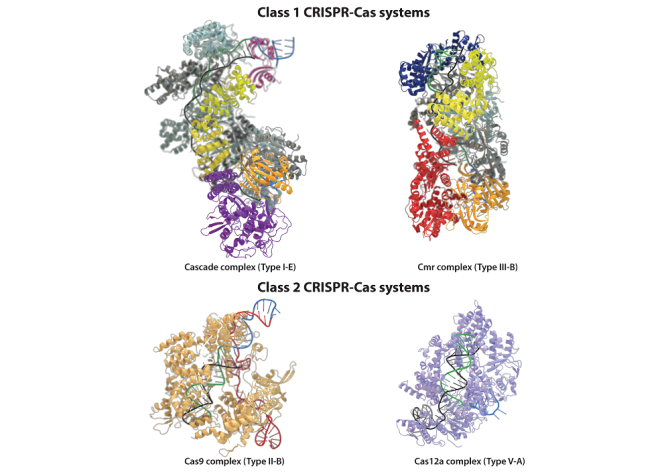
Project
Unravelling the mechanistic roles of CRISPR nucleases: more than a little mystery
Exploring the underlying biology of class 2 CRISPR-Cas prokaryotic defence systems leading to their potential exploitation.
Background
The basics of the popular CRISPR-Cas genome editing tool arises from an age-old arms race raging out of sight and yet all around us (and on us, and in us). Prokaryotes are constantly at odds with selfish genetic elements such as viruses and plasmids. Therefore, archaea and bacteria have evolved multiple defence systems to combat invaders including an adaptive and heritable immune system, i.e. clustered regularly interspaced palindromic repeats (CRISPR) and the CRISPR-associated proteins (CRISPR-Cas). When a bacterial cell is invaded by foreign DNA, its CRISPR system captures snippets of it and catalogues those DNA fragments. When the same virus infects the cell again, the system can quickly recognize and eradicate it.

The two classes of CRISPR-Cas systems differ fundamentally with respect to the organisation of the effector module. Class 1 effectors utilise multi-protein complexes, whereas class 2 effectors rely on single-component effector proteins such as the well-characterized Cas9. CRISPR-Cas12a (formerly Cpf1) is a recently characterized class 2 effector with distinct features from Cas9. The multifaceted and modular architecture of the CRISPR-Cas systems also allows it to play nondefense roles, such as biofilm formation, cell differentiation, and pathogenicity.
Aim of the project
Integration of biochemistry and molecular genetics has contributed substantially to revealing many of the unique features of the variant CRISPR-Cas types. We focus on further unravelling the molecular mechanisms of the different steps leading to CRISPR-Cas12a immunity. We apply the acquired knowledge by developing and utilizing CRISPR-based tools for genetic engineering and gene regulation in prokaryotes (and eukaryotes). Furthermore, we aim to elucidate novel roles of the CRISPR-Cas systems other than the widely-known defence.
Techniques
A thesis project could include a broad range of techniques, such as molecular cloning, in vivo assays, heterologous expression, purification and characterization of novel proteins, enzymatic in vitro assays.
Bsc/Msc thesis
Thesis projects are available for enthusiastic MSc or BSc students with an interest in molecular microbiology, biotechnology, biochemistry and genetics.